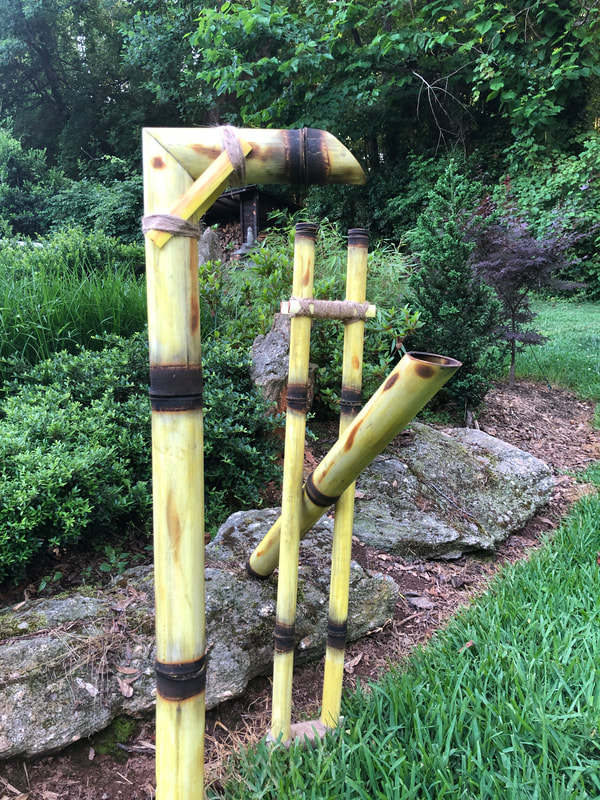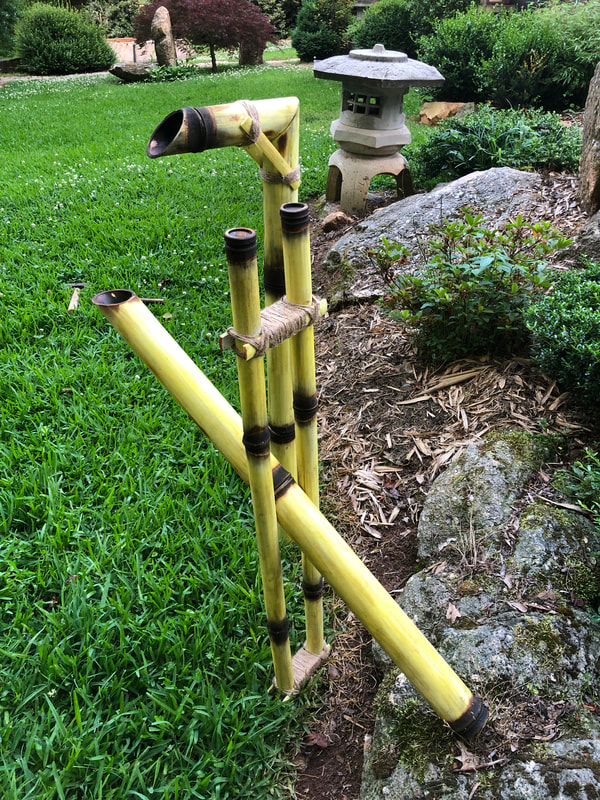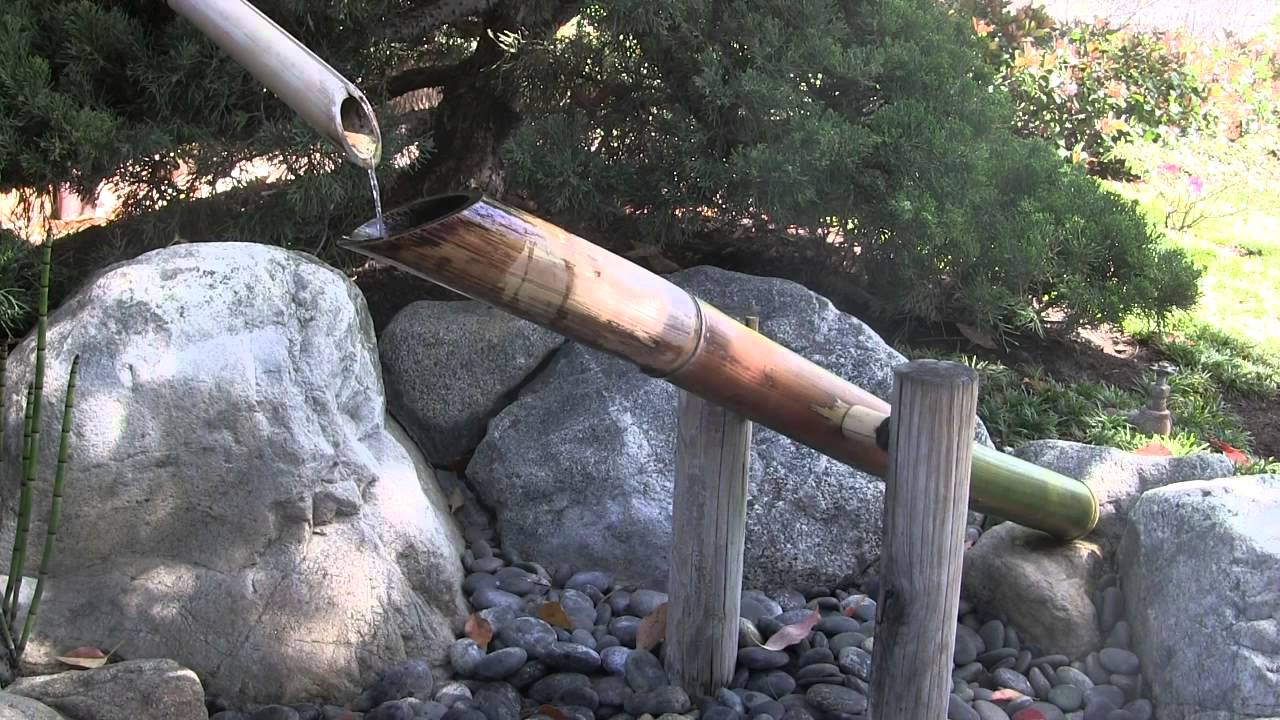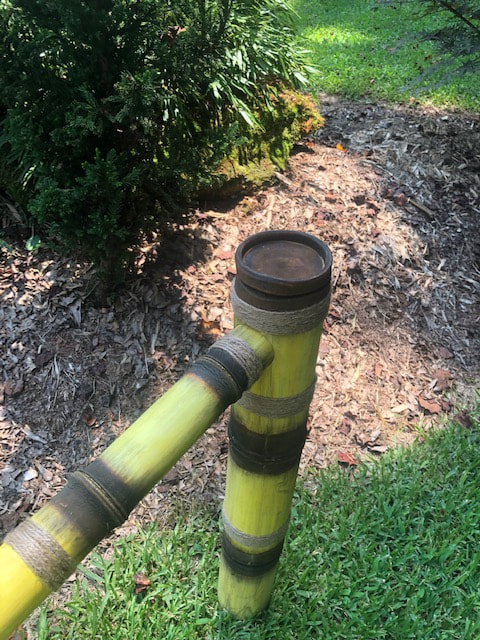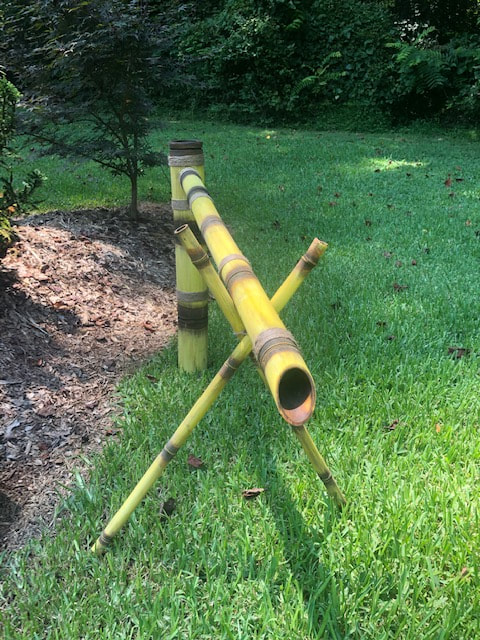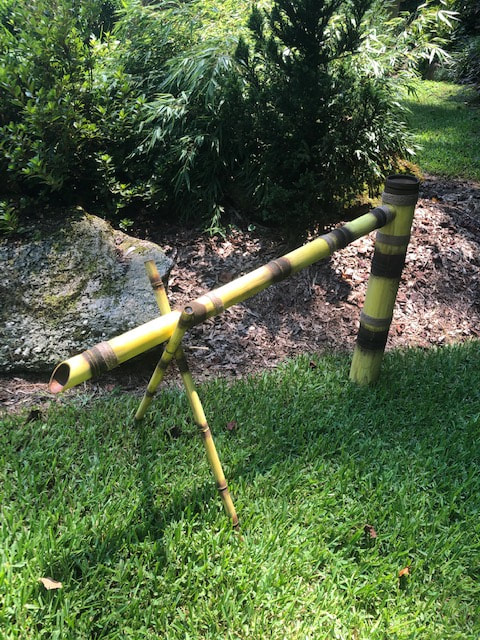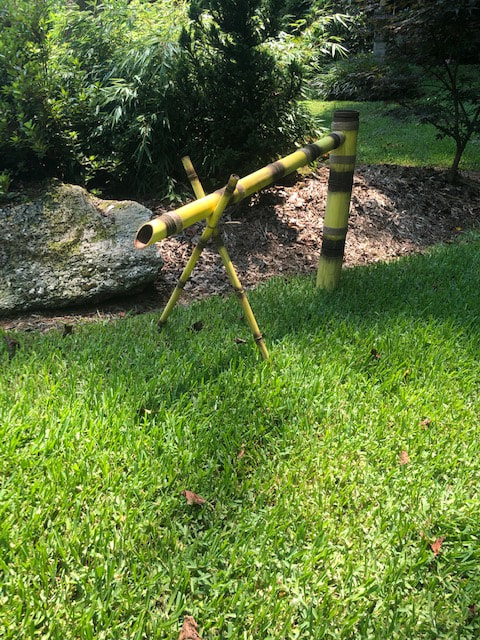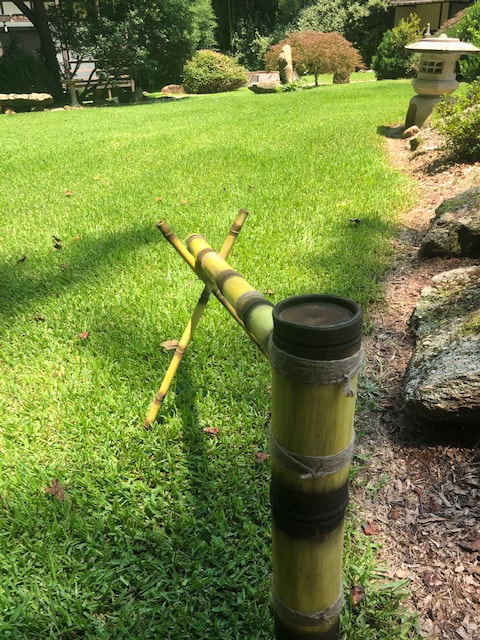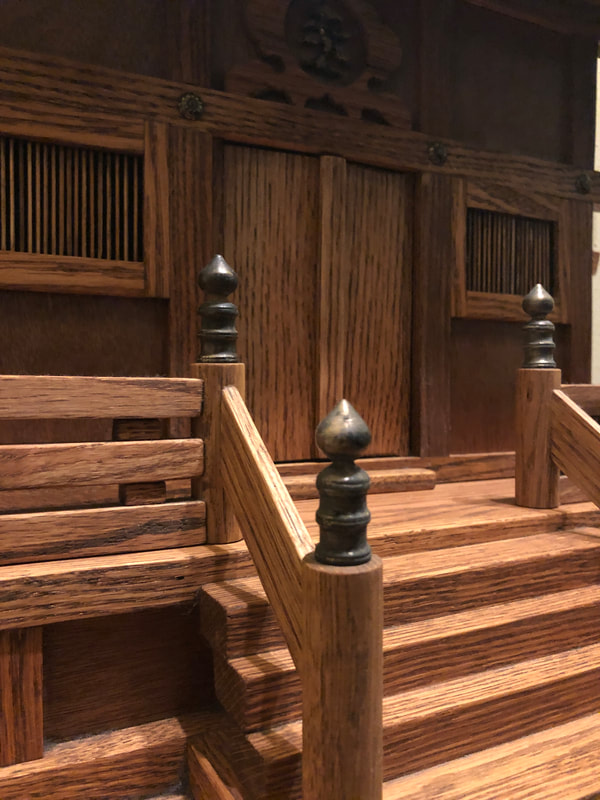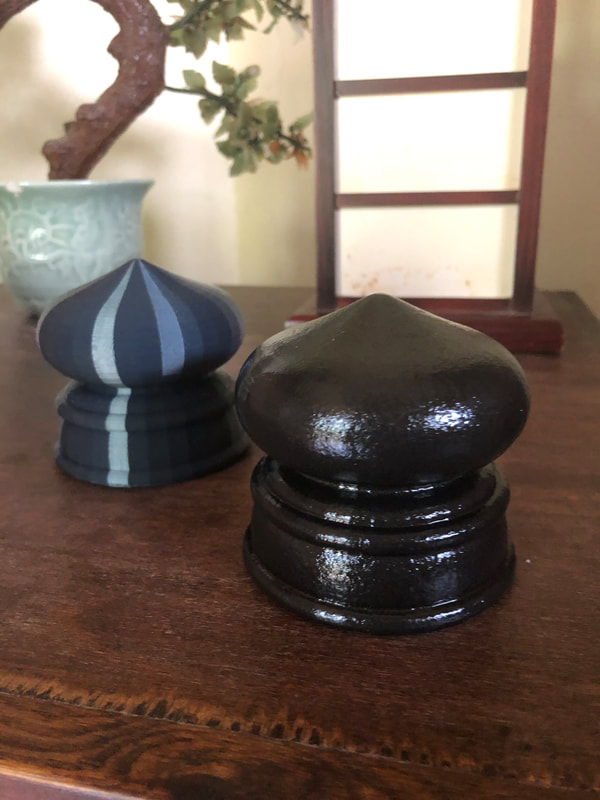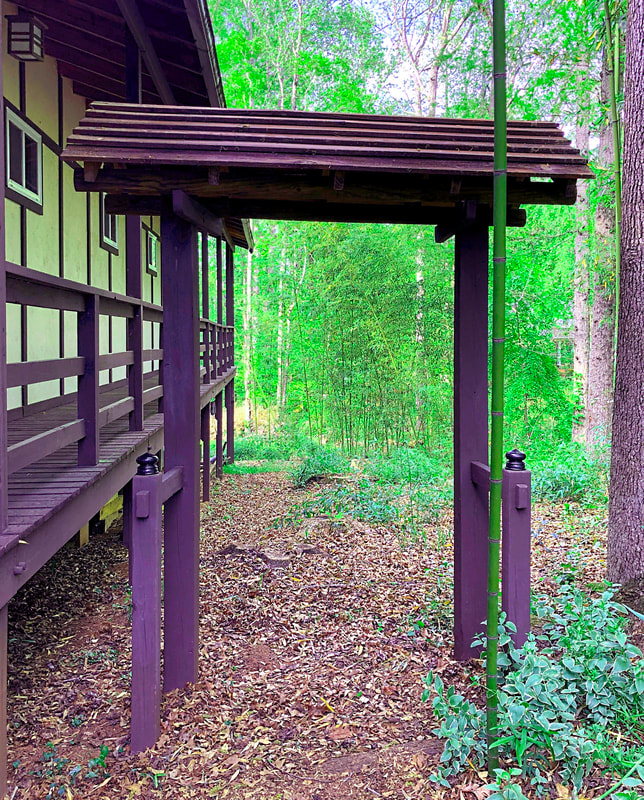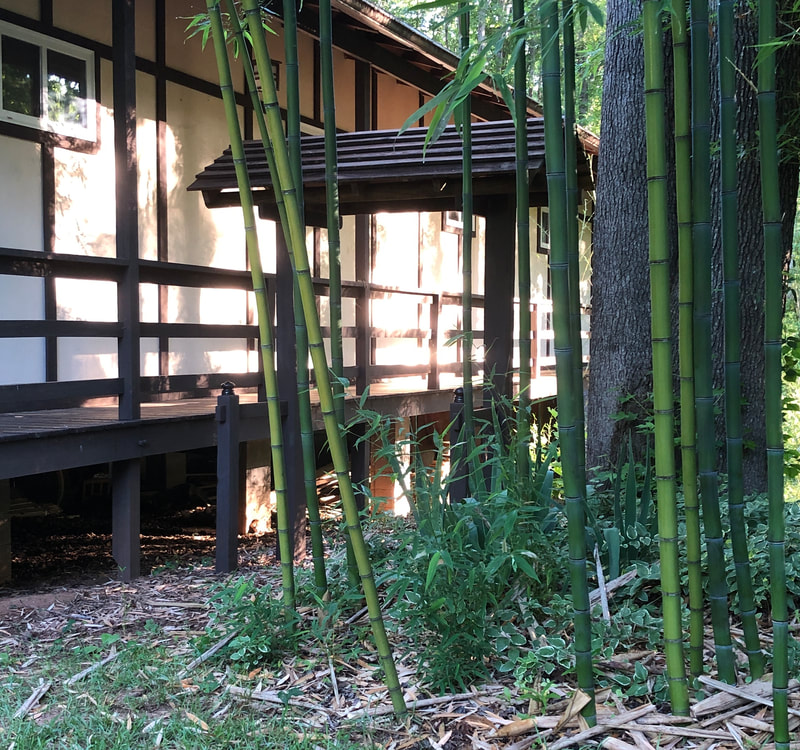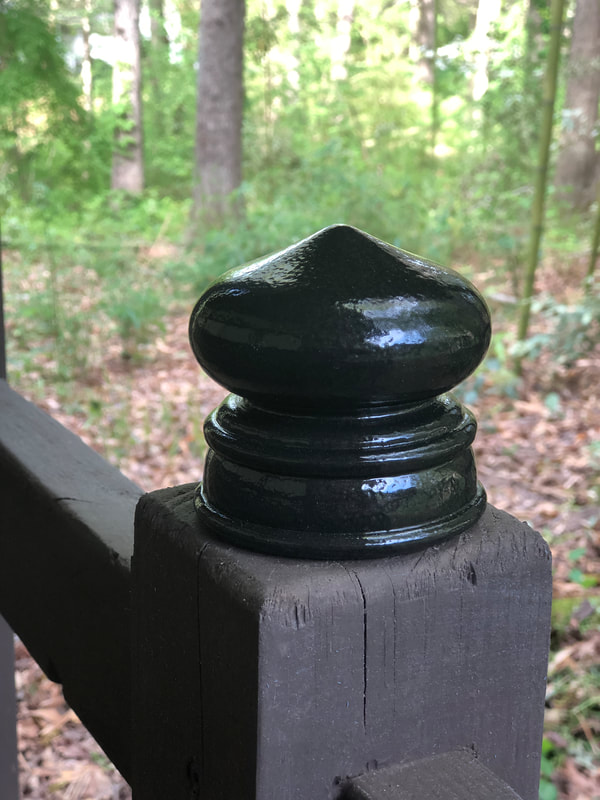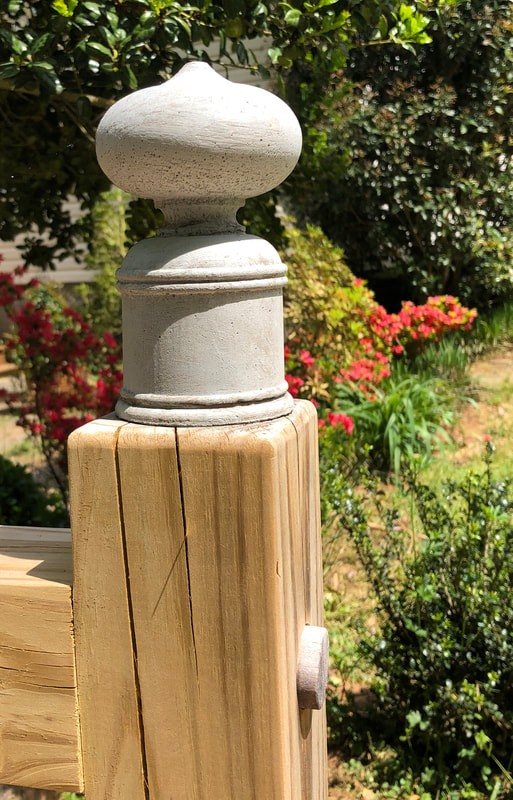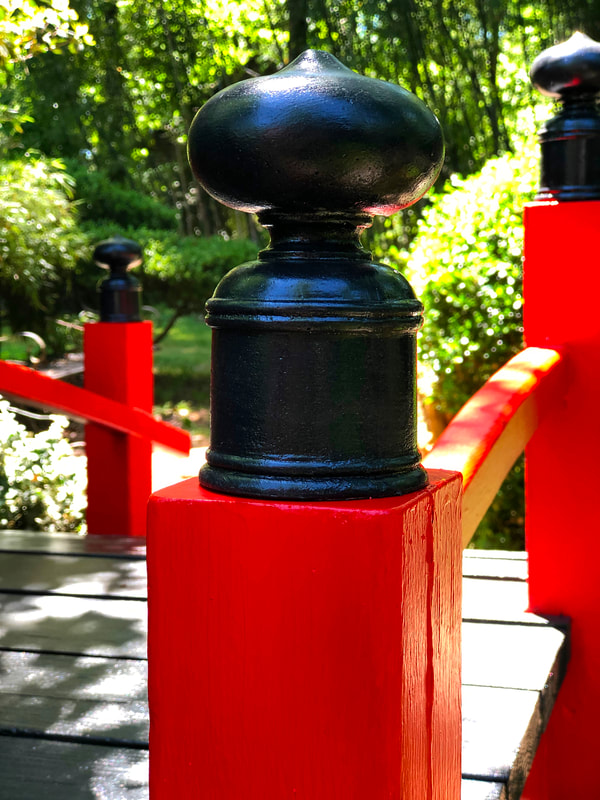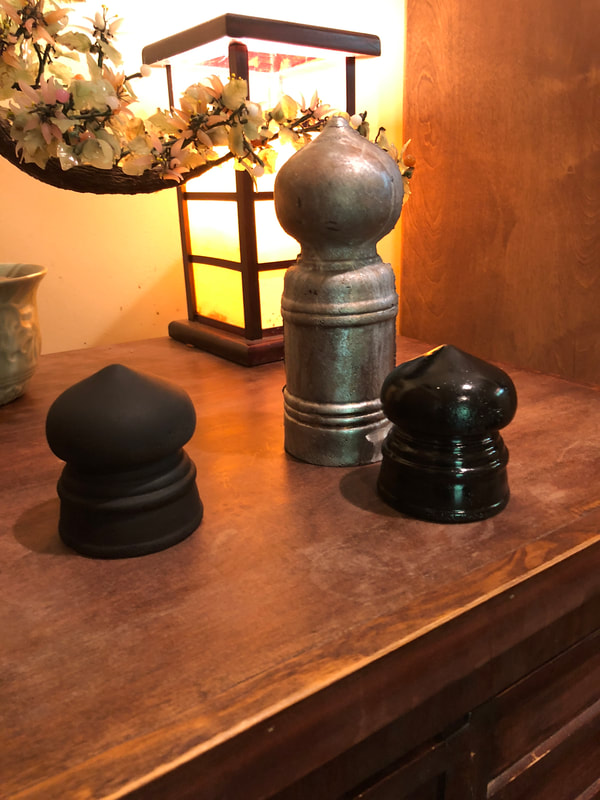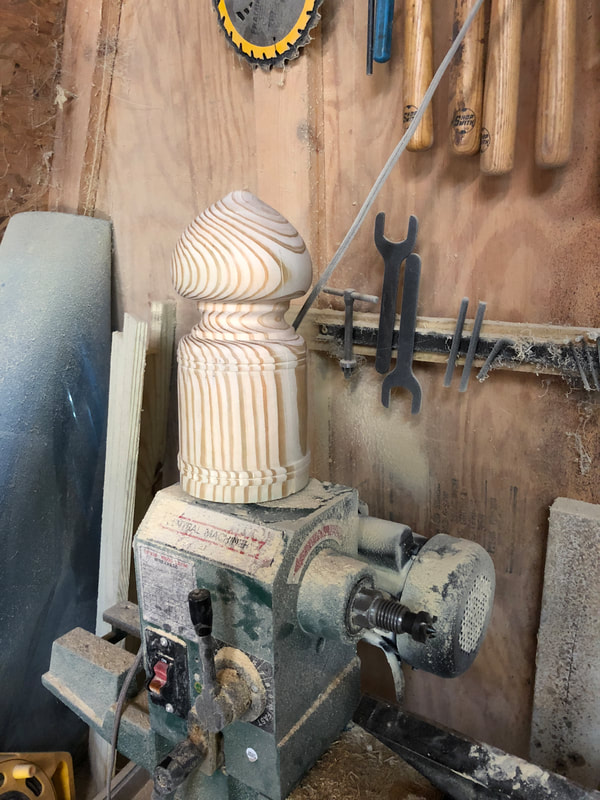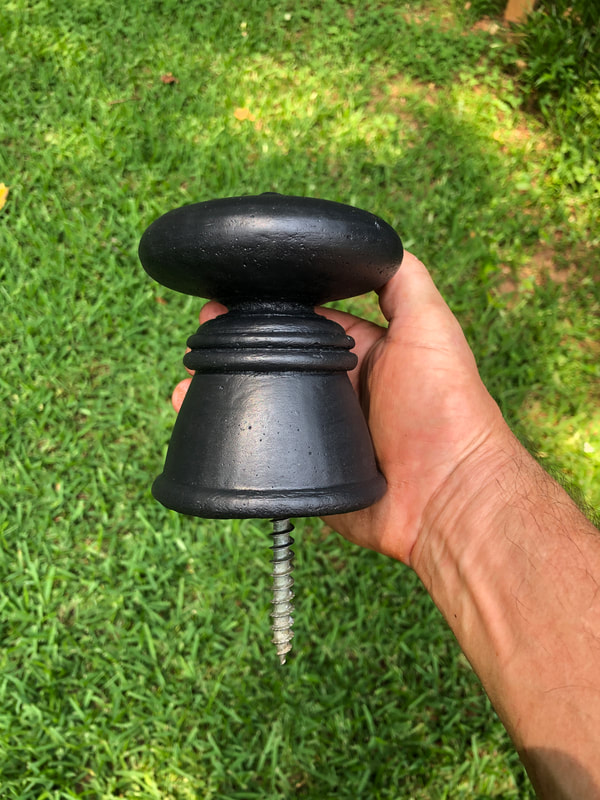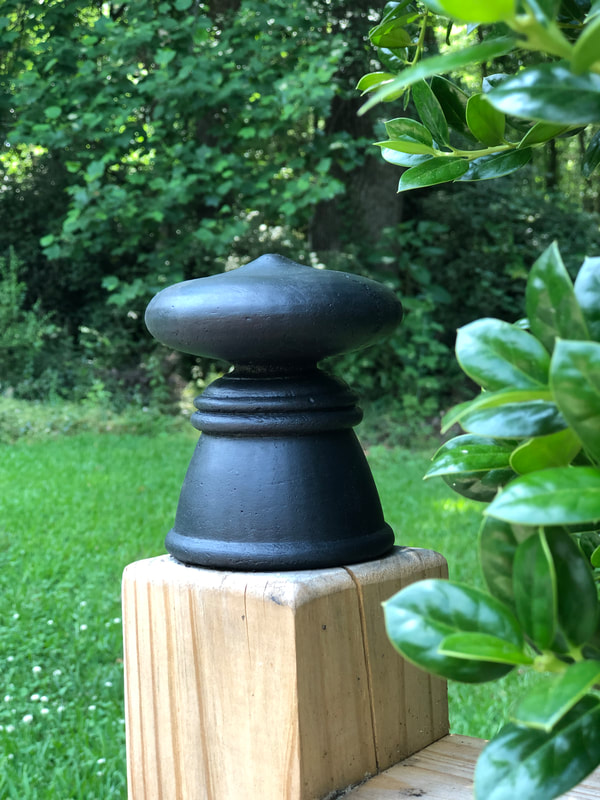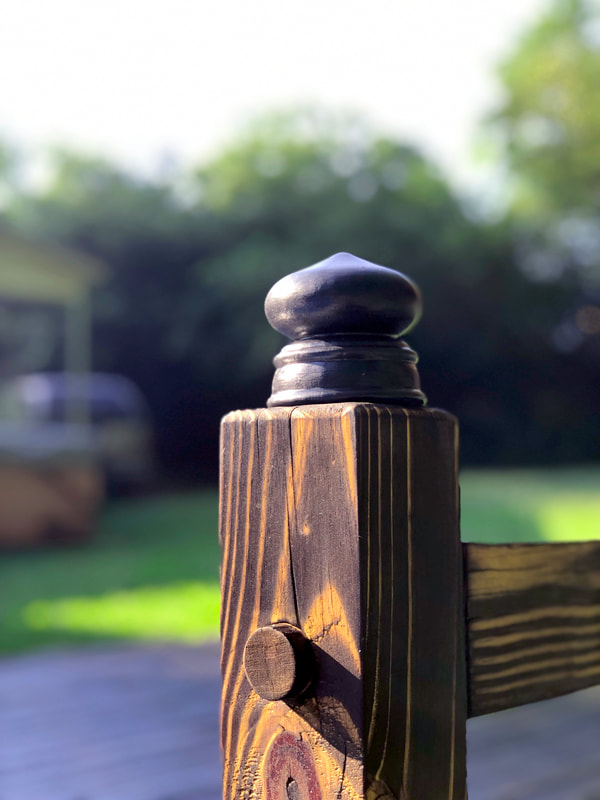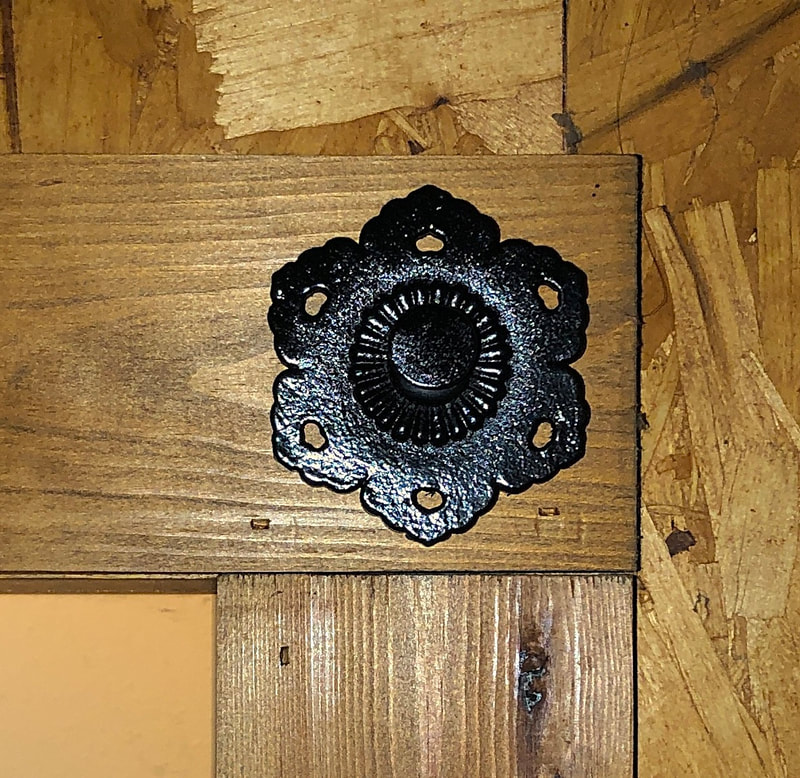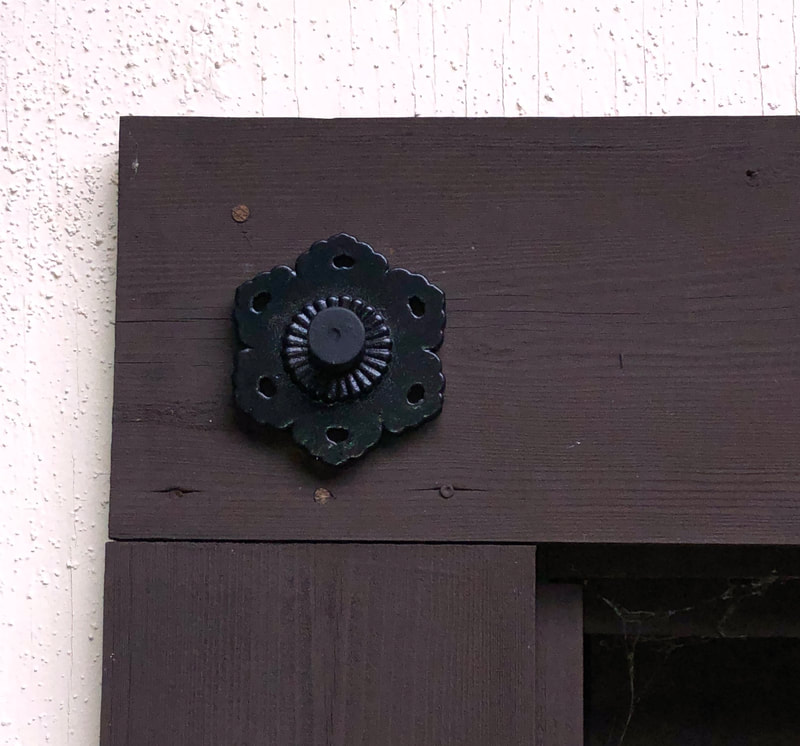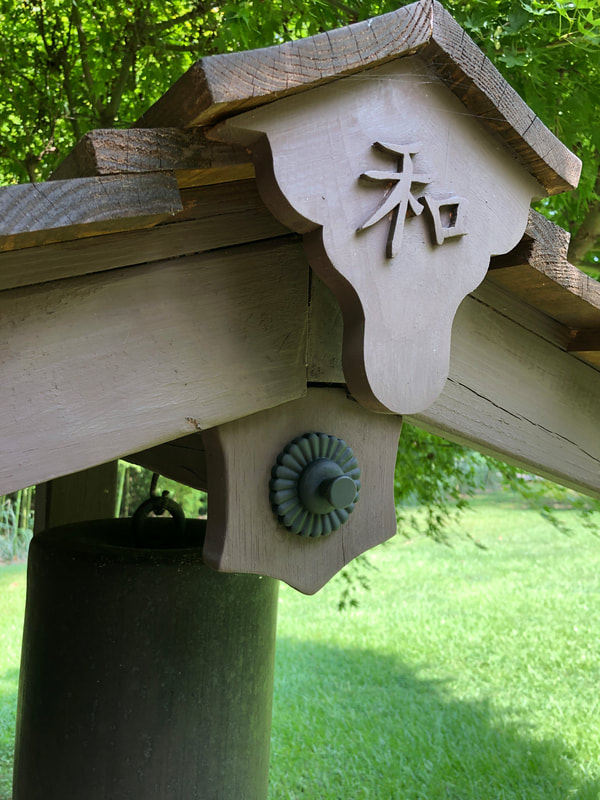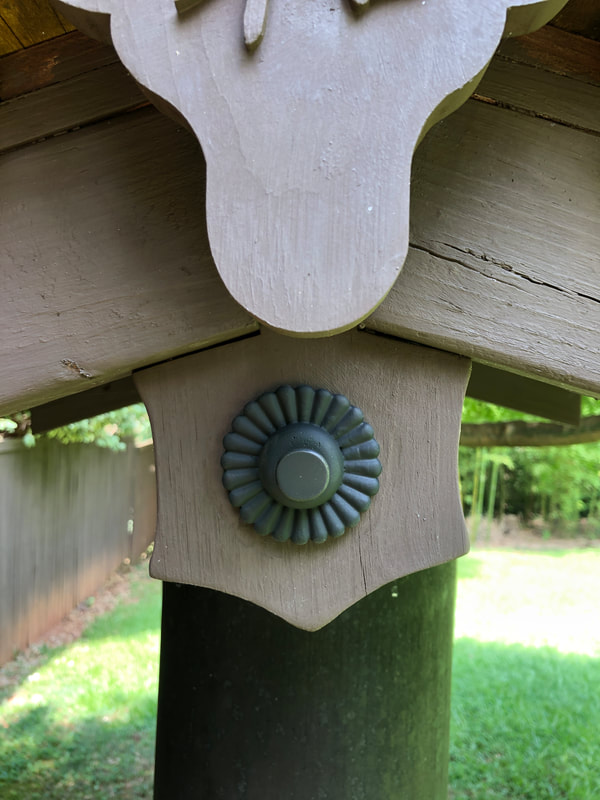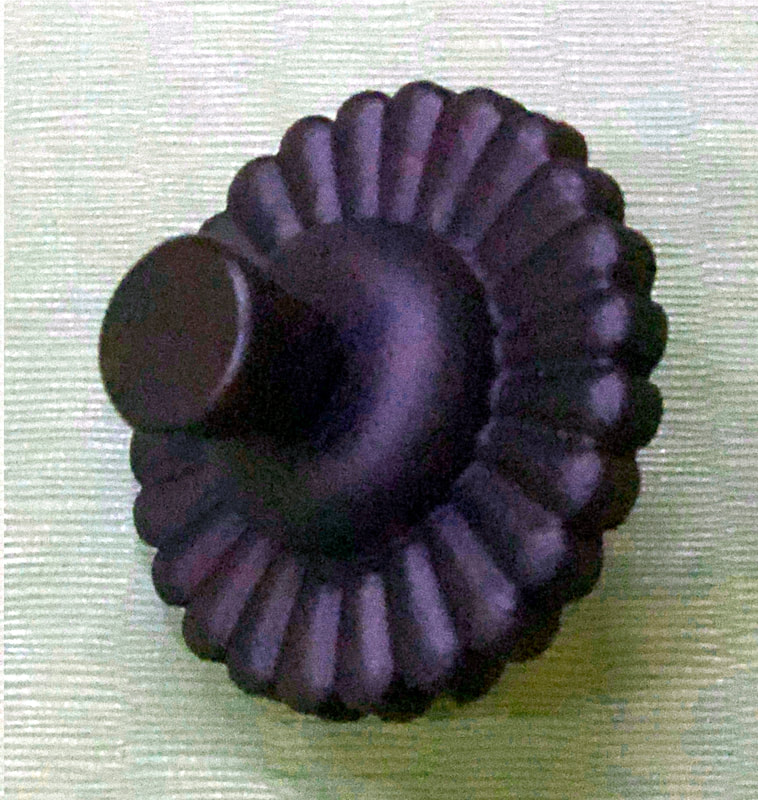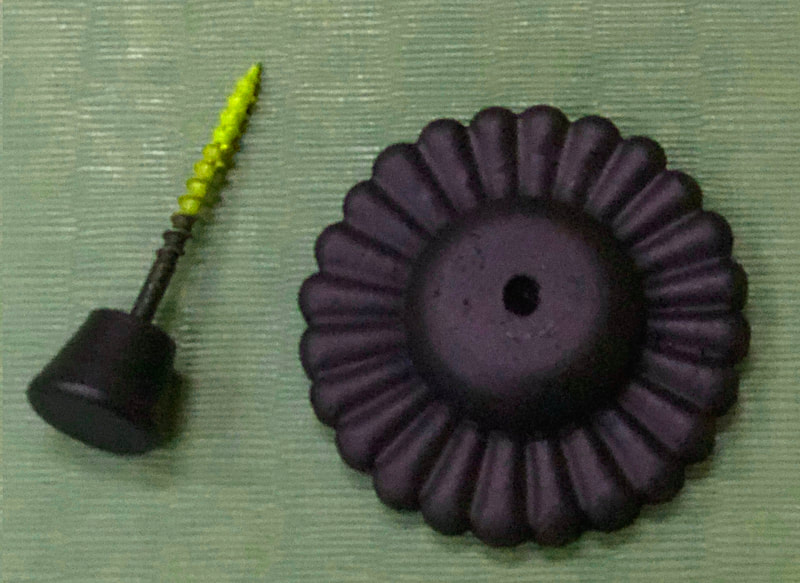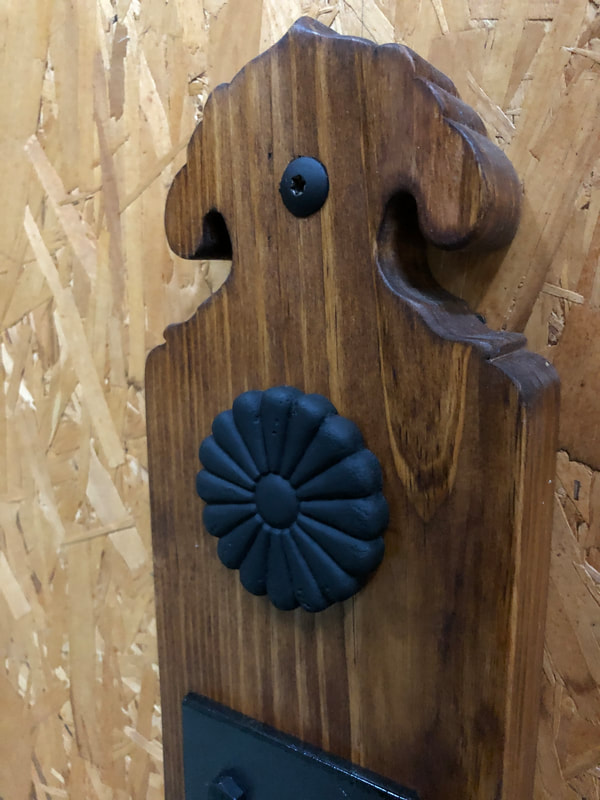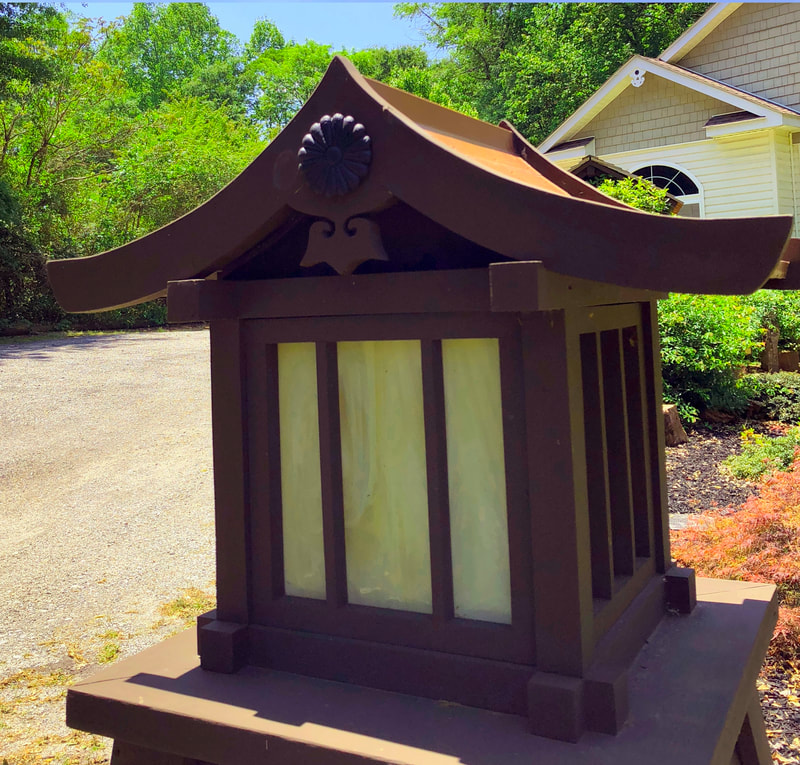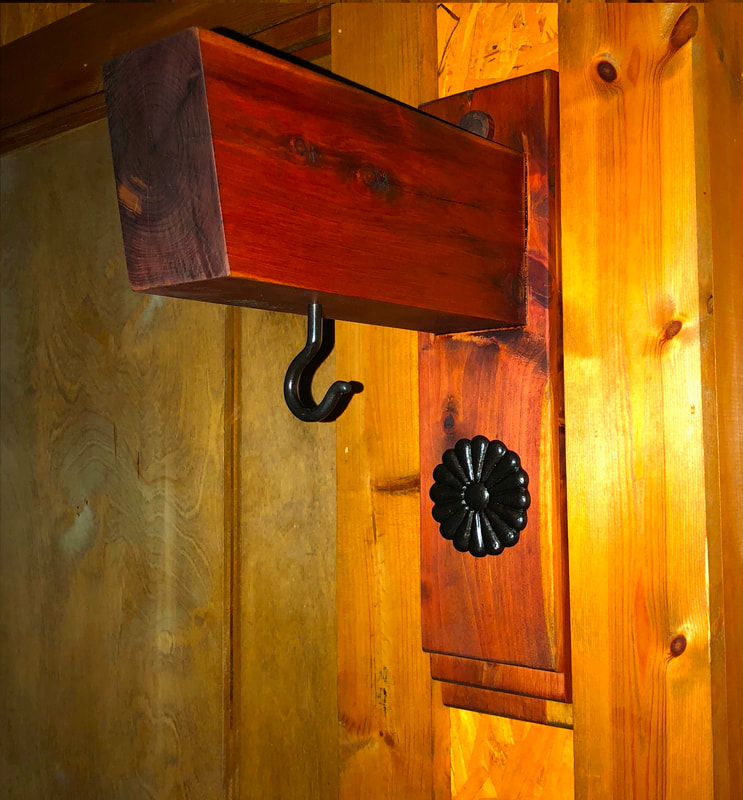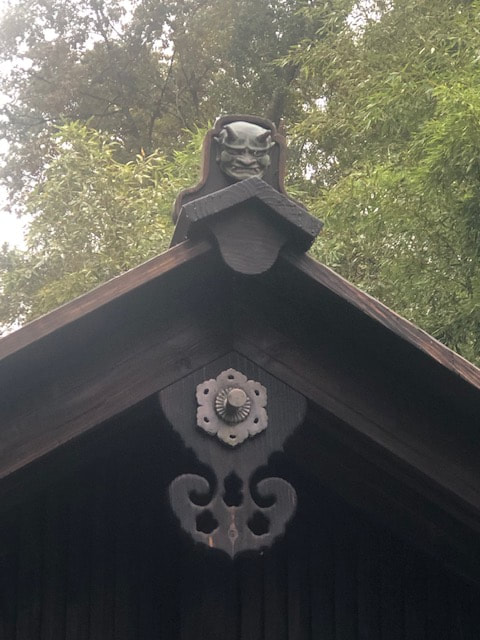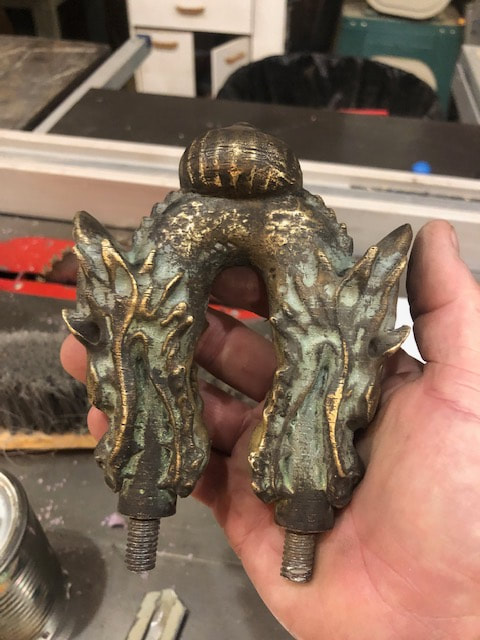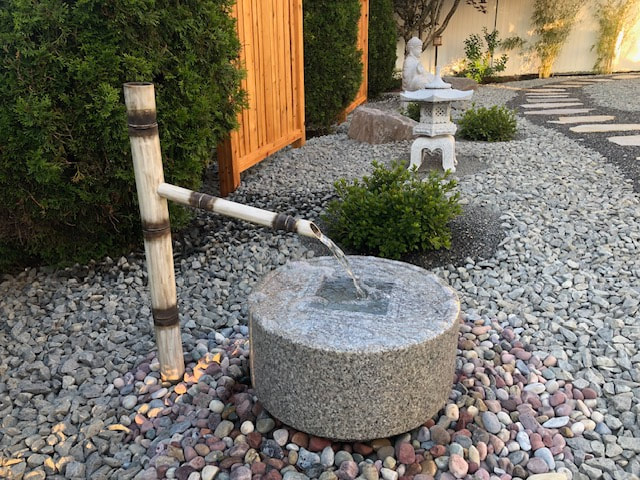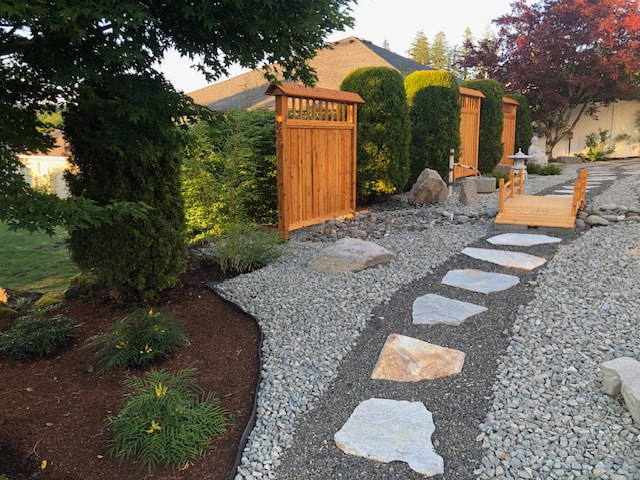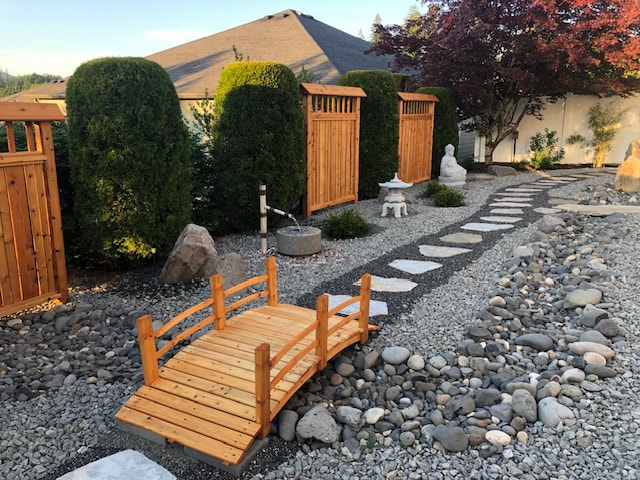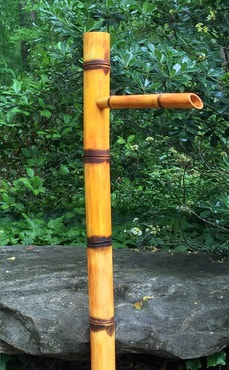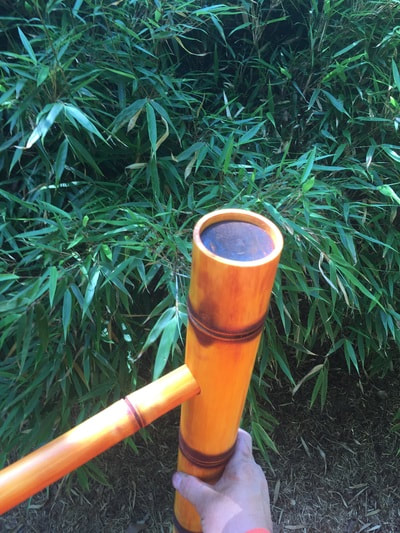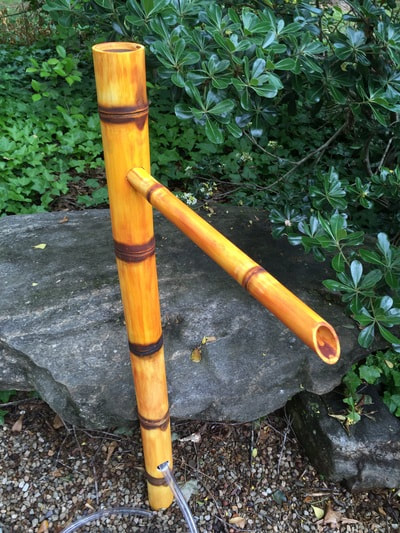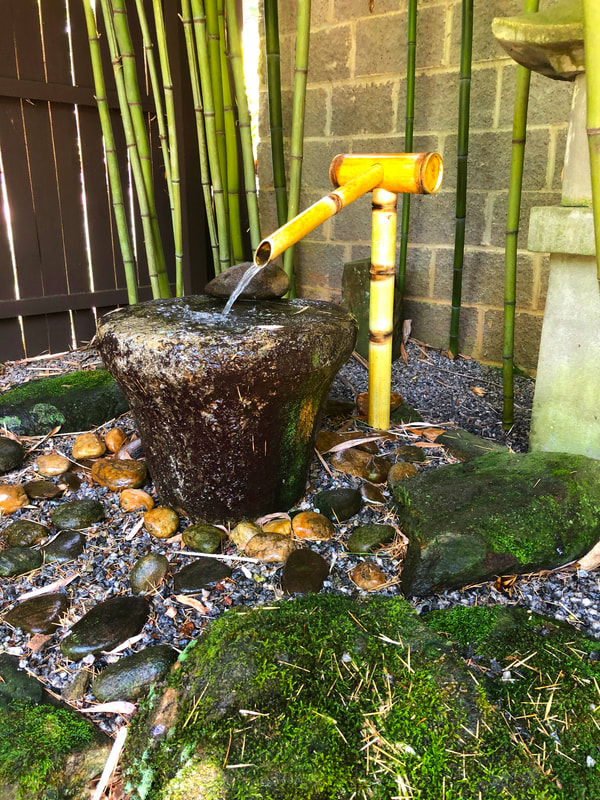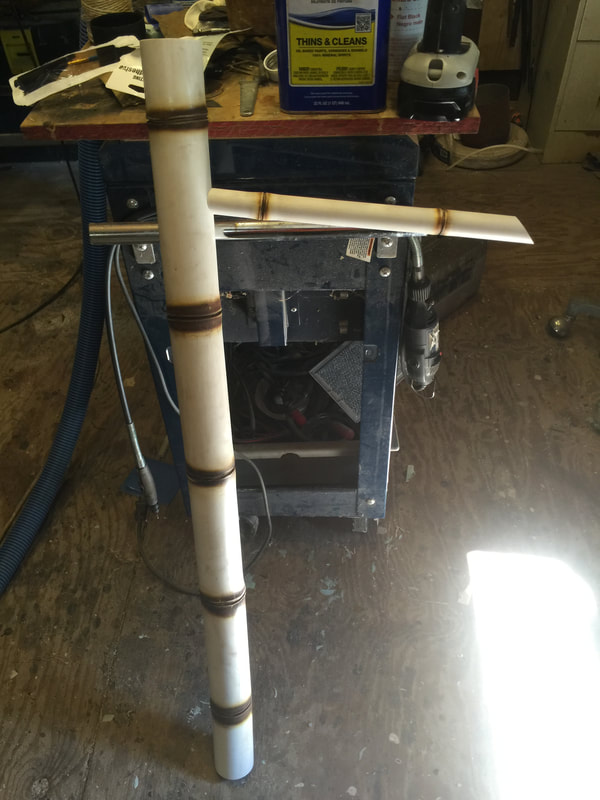Sensei's Garden Art
On this page, you will find some of the extra traditional Japanese details I have added to my dojo and garden to go along with my bells. Each of these additions are important details I felt I must have here at the dojo. I have researched and handcrafted each of these elements myself being careful to show respect for each of them, their proper use and meaning. Please enjoy reading about my process and a little history on each of them.
If you see anything, you like and would like to add another touch of detail to your garden project please feel free to click the "contact sensei" below and I would be happy to work with you to add that extra something you are looking for to your Japanese garden
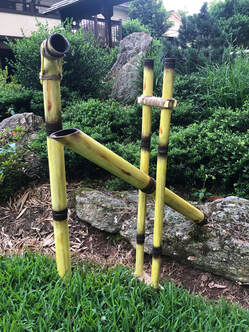
SOLD
Handcrafted Shishi Odoshi
Traditional Japanese Rocking Water Fountain
175.00+ Shipping
Posted 6-11-21
What makes this item special is that It is not actually bamboo but made of pvc piping designed to mimic the look and feel of real bamboo. It measures approximately 36"tall as well as having a 35" water spout and comes with just over 5' of 1/2" water pipe. It is not painted it is colored with a dye specially designed for pvc. Even though I have access to bamboo I decided to try something different and make one that would withstand the moisture. Natural bamboo is beautiful, unfortunately as I mentioned it will in time rot away unlike this fountain. Even when it was fresh new no one has ever realized the fountain just inside the dojo gate wasn’t real bamboo until they were told. Because of that my wife thought it would be a good idea to make this and other styles to offer to others. You will have the authentic look of bamboo and the strength and longevity of the plastic pipe. If you have any question or would like a specific size, design or color just let me know.
History of the Shishi Odoshi
In a broad sense, refers to a Japanese made devices made to frighten away animals which pose a threat to gardens much like a scarecrow would. Traditionally
It consists of a segmented tube, usually of bamboo, pivoted to one side of its balance point. At rest, its heavier end is down and resting against a rock. A trickle of water into the upper end of the tube accumulates and eventually moves the tube's center of gravity past the pivot, causing the tube to rotate and dump out the water. The heavier end then falls back against the rock, making a sharp sound, and the cycle repeats.
Even though these fountains were originally intended to startle any herbivores such as deer which may be grazing on the plants in the garden, the shishi-odoshi are now a part of the visual and aural design of many gardens and are now primarily used for their aesthetic value. used primarily for their aesthetic value.
Handcrafted Shishi Odoshi
Traditional Japanese Rocking Water Fountain
175.00+ Shipping
Posted 6-11-21
What makes this item special is that It is not actually bamboo but made of pvc piping designed to mimic the look and feel of real bamboo. It measures approximately 36"tall as well as having a 35" water spout and comes with just over 5' of 1/2" water pipe. It is not painted it is colored with a dye specially designed for pvc. Even though I have access to bamboo I decided to try something different and make one that would withstand the moisture. Natural bamboo is beautiful, unfortunately as I mentioned it will in time rot away unlike this fountain. Even when it was fresh new no one has ever realized the fountain just inside the dojo gate wasn’t real bamboo until they were told. Because of that my wife thought it would be a good idea to make this and other styles to offer to others. You will have the authentic look of bamboo and the strength and longevity of the plastic pipe. If you have any question or would like a specific size, design or color just let me know.
History of the Shishi Odoshi
In a broad sense, refers to a Japanese made devices made to frighten away animals which pose a threat to gardens much like a scarecrow would. Traditionally
It consists of a segmented tube, usually of bamboo, pivoted to one side of its balance point. At rest, its heavier end is down and resting against a rock. A trickle of water into the upper end of the tube accumulates and eventually moves the tube's center of gravity past the pivot, causing the tube to rotate and dump out the water. The heavier end then falls back against the rock, making a sharp sound, and the cycle repeats.
Even though these fountains were originally intended to startle any herbivores such as deer which may be grazing on the plants in the garden, the shishi-odoshi are now a part of the visual and aural design of many gardens and are now primarily used for their aesthetic value. used primarily for their aesthetic value.
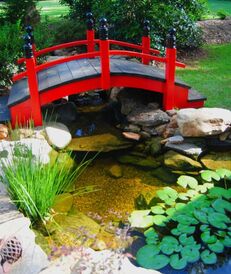 Donjitsu Do Garden Bridge
Donjitsu Do Garden Bridge
I will start with the bridge by the pond and how I updated it. You can see in old pictures like the one on the left my bridge does have giboshi. This was around 2012 I believe. At the time I went with a simple wooden design for the decorative finials with a round top. It looked ok and most might have been completly satisfied however, I always felt it had to be done right and knew I would sameday add that much needed detail. This was before I had and was able to use a wood lathe. My woodworking skills have greatly improved and I have learned a lot since then adding metal and concrete casting to my set of skills. Its been seven years since the bridge was built and in May 2019 the bridge has gotten some mantaince, fresh paint and has finally updated with proper traditional giboshi. It can be seen in the picture at the top of this page. In my opinion it finally looks the way it was always meant to.
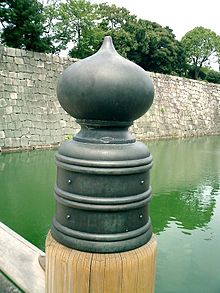 Bronze Giboshi- Nijo Castle Japan
Bronze Giboshi- Nijo Castle Japan
So what are giboshi? Giboshi are ornamental finials or post toppers commonly found in Japan's traditional gardens on bridges as well as at Shinto shrines and temple grounds adorning handrails. Its origins are believed to be from another ornament found on shrines and temple rooftops called a Hoju. The giboshi and Hoju look very similar in appearance with the same onion shape design on top. It is also believed by some that it was actually modeled from the flowers of the Welsh onion and that its smell has the power to protect against evil.
Like most things Japanese, they are very hard to come by especially considering the number I needed for my projects so I decided to make them myself and if everything goes well offer them to others. My designs are based on traditional bronze versions found in Japan. In my research, there are 3 common mediums used when making them. Wood, bronze and it appears modern ones are now cast in brass. However I am sure stone/ concrete fit in there some were as well, depending on where it is utilized. With this information, I set out to come up with my own versions. After working on this idea for about a year, I have had several successes and at this point, I am very happy with my results. I decided to create them in several different mediums myself including wood, metal, concrete, and 3D printed plastics.
I have a small version cast in pewter. These were made from a wooden blank I turned on my wood lathe and then molded in a high heat silicone and then cast in pewter. They were then acid washed to give them an aged appearance. These are used on post rails of Kamidana that I also make. This is also how you would see them in full scale at a Shinto shrine. They are .5" in diameter and approximately 1.5" tall. Another version was designed in cad and is actually completely 3D printed in PLA or PETG, primed, polished and then a textured gloss finish is added along with a way to attach them to a post. These are 3" in diameter, 3" tall and are designed to fit a 4x4 post.
This next version was also designed using a Cad program but as a 3part mold and are cast in high strength concrete. Once out of the mold they are then cleaned, polished to give them a hand worn feel. I finished each of them in black which in my opinion makes them look like old iron work, and then sealed for more protection. This gave me a slightly pitted worn aged look, which was what I was going for. I enjoy making things look like they have been around and have a story. At this point, I have 3 different versions of the concrete design.
The last is a solid aluminum version. These are made using a sand casting technique. A wooden split mold is used to make a cavity in the casting sand for the molten aluminum to be poured into. With this method, I also hope to be able to do brass and bronze in the future as as well.
This next version was also designed using a Cad program but as a 3part mold and are cast in high strength concrete. Once out of the mold they are then cleaned, polished to give them a hand worn feel. I finished each of them in black which in my opinion makes them look like old iron work, and then sealed for more protection. This gave me a slightly pitted worn aged look, which was what I was going for. I enjoy making things look like they have been around and have a story. At this point, I have 3 different versions of the concrete design.
The last is a solid aluminum version. These are made using a sand casting technique. A wooden split mold is used to make a cavity in the casting sand for the molten aluminum to be poured into. With this method, I also hope to be able to do brass and bronze in the future as as well.
Below are some of the styles of giboshi that I have made for different projects.
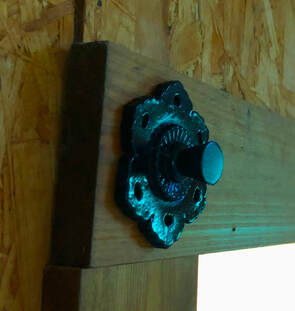 Kigikakushi or nail-head cover of my own design.
Kigikakushi or nail-head cover of my own design.
These are hand cast kugi kakushi. Each of these are my own designs based on historical pieces that I have found. I have made and used these all through my garden and dojo. They have been cast in both pewter as well as aluminum and have been painted black to give them and aged iron look. They are solid and feel substantial in your hand. Some have a screw embedded within the piece where others have a screw that passes threw the center of the design to attach them. I can also make 3D printed versions that are much lighter and can be painted to look metallic.
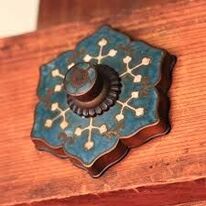 This is a picture of a historical piece from which one of my designs was inspired from.
This is a picture of a historical piece from which one of my designs was inspired from.
What are Kugikakushi? They are actually ornamental nail-head covers that were often used for decorating the traditional Japanese homes of Samurai. It would have been used in guest rooms called Shoin Zukuri and typically found in homes of those who were high ranking. It was also used outside of the home as well as in shrines and temples throughout Japan.
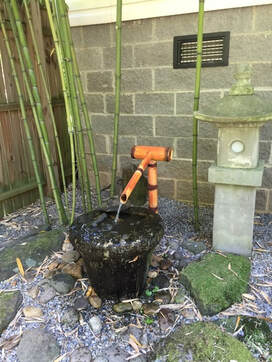 Donjitsu Do Dojo gate bamboo fountain
Donjitsu Do Dojo gate bamboo fountain
This is something I made out of necessity. It is a handcrafted Japanese Bamboo water fountain. This one measures 39" high, 2.5" in diameter and the spout is 14" long. It comes with a 43.5" of ½ tubing and a brand new 158 GPH miniature submersible pump. What makes this item special is that It is not actually bamboo but made of pvc piping designed to mimic the look and feel of real bamboo. Over the years the fountain just inside my dojo gate (pictured left, now pvc) has been replaces several times due to it eventually rotting away from always being wet. Even though I have access to bamboo I decided to try something different and make one that would withstand the moisture. Natural bamboo is beautiful, unfortunately as I mentioned it will in time rot away unlike this fountain. Even when it had just been installed no one realized the fountain wasn’t actually bamboo until they were told. Because of that my wife thought it would be a good idea to make this and other styles to offer to others. You will have the authentic look of bamboo and the strength and longevity of the plastic pipe. If you have any question or would like a specific size, design or color just let me know.
Pics and short video of one of my fountains in a beautiful Japanese Garden
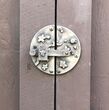
Decotive Door / Gate latch

Shachihoko
This was another one of my garden projects. It is Japanese mythical creature called a “shachihoko”. They can be found at the very top of almost every Japanese castle In Japan. According to the myths they would have the head of a dragon and body of a carp and believed to come from the cold seas of the north. They are considered protective creatures that could swallow and store large amounts of water in their bellies. If a fire broke out in the castle the shachihoko could expel the water putting out the fire. It is also said they could control and summon the rain as well for protection. I realize mine is not on top of “my castle” but at the bottom at the end of a gutter but how far off am I if they can control the rain?
They were made primarily of ceramic gilded in gold however, some have been made of stone others including a famous set made of wood with actual gold plates that can be found at the Nagoya castle in Edo which was constructed in 1612. Mine was designed and 3D printed with a finish to make it look like stone. At some point I plan to cast concrete versions of these.
This was another one of my garden projects. It is Japanese mythical creature called a “shachihoko”. They can be found at the very top of almost every Japanese castle In Japan. According to the myths they would have the head of a dragon and body of a carp and believed to come from the cold seas of the north. They are considered protective creatures that could swallow and store large amounts of water in their bellies. If a fire broke out in the castle the shachihoko could expel the water putting out the fire. It is also said they could control and summon the rain as well for protection. I realize mine is not on top of “my castle” but at the bottom at the end of a gutter but how far off am I if they can control the rain?
They were made primarily of ceramic gilded in gold however, some have been made of stone others including a famous set made of wood with actual gold plates that can be found at the Nagoya castle in Edo which was constructed in 1612. Mine was designed and 3D printed with a finish to make it look like stone. At some point I plan to cast concrete versions of these.
If these kind of details intrest you keep an eye on this page there is more to come.
This website uses marketing and tracking technologies. Opting out of this will opt you out of all cookies, except for those needed to run the website. Note that some products may not work as well without tracking cookies.
Opt Out of Cookies
